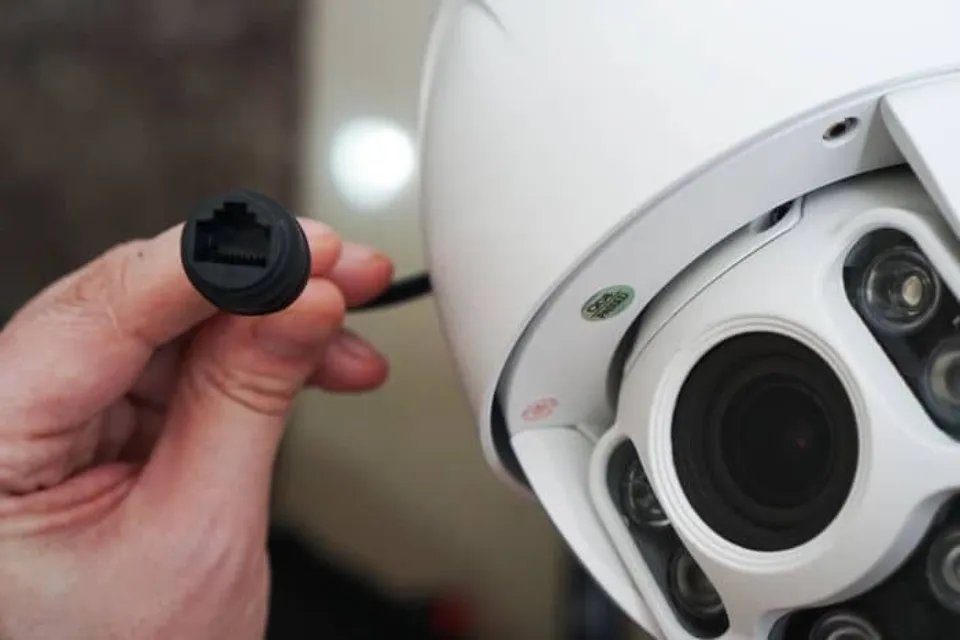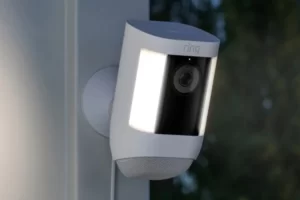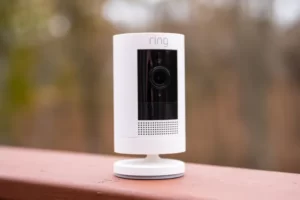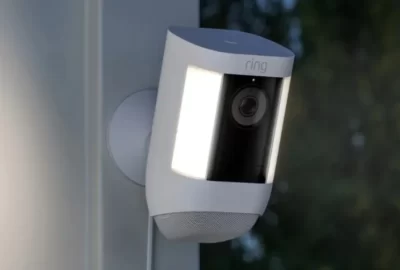What is PoE Camera? Everything You Need to Know
Do you know what is POE camera?
Power of Ethernet (or PoE) is the process of using wires already built into an Ethernet cable to carry network data and electricity.
This guide explains what PoE security cameras are, why they’re useful, and what characteristics to consider when comparing PoE security camera systems.
What Are PoE Security Cameras?
Let’s break down what a PoE security camera is and how it works.
PoE stands for power over Ethernet. PoE is a system used for carrying electric power and data over copper One cable is required per camera for Ethernet cabling, which means. PoE can simplify installation and enable more flexible camera placement if you have hundreds or thousands of cameras because there are no individual power cords or outlets required.
Internet protocol (IP) cameras are the security cameras using PoE technology. Similar to a webcam, these digital video cameras transmit and receive data online. IP cameras, however, have standalone IP addresses, in contrast to standard webcams. They are networked in the same way that computers and printers are.
Not all IP cameras support PoE. Some IP cameras require wall plugs to be plugged in. Only some IP cameras’ power delivery is described by PoE.
How Does a PoE Security Camera System Work?

PoE camera systems only need a few things to get up and running: Ethernet cables, such as Cat 5 or Cat 6, a network PoE switch, PoE cameras, and a PoE NVR. In analog camera setups, the cameras transmit video, which the DVR then encodes and prepares for viewing.
Contrarily, IP cameras. Instead, they perform the labor-intensive processing of the images before streaming them to the NVR, where they are stored or otherwise viewed.
A network switch and an Ethernet cable are all that are required to connect a camera to an on-premises PoE switch. Multiple PoE ports are included on network switches, allowing you to set up and power four or more cameras with just one unit. PoE camera systems simplify operations and reduce cable clutter.
To view video footage, you have several options. For instance, you can use a USB port to connect a mouse to an on-premises NVR and a VGA or HDMI cable to connect a monitor.
Or, to access your NVR remotely, you must use a network router to connect it to the internet. Numerous NVRs available today include WiFi support as well, making it simple to join the NVR to your current WiFi network.
If you have a cloud-based NVR (also sometimes called a network gateway), you can connect multiple cameras to a PoE switch or injector to distribute power and network connections.
Then, using cloud-based software, you activate and connect your cameras and gateway. Anywhere you are, you can access and stream video feeds using viewing software, video management software (VMS), or mobile apps on Apple or Android devices.
Difference Between PoE and Other Types of Security Camera Systems
Video surveillance systems come in a variety of varieties, each with its own unique operation. The types of devices used and required cabling determine how different systems operate. Here’s a brief overview of the different kinds of security camera systems:
- Analog camera systems were once the industry standard. Consider the famous CCTV cameras from crime dramas. A digital video recorder (DVR), which processes images, is connected to these security cameras. They require two cables: one for the power source and one for the DVR, which is typically done using a coaxial cable. Although analog cameras are still in use today, most users prefer the more modern technology found in IP cameras, including the higher-quality video.
- WiFi camera systems use wireless cameras that transmit or stream footage to a cloud-based server. As the name implies, WiFi systems are wireless, often using cameras powered by battery or solar power for the most flexibility. Many home security systems operate via WiFi, such as video doorbell cameras.
- IP camera systems use wired internet protocol (IP) cameras to transmit video feeds to a network video recorder (NVR), which records and stores footage. Many commercial and industrial operations use IP security camera systems because they are thought to be more robust and reliable than WiFi systems.
- PoE camera systems are the only distinction being that PoE cameras are used specifically in IP camera systems. One Ethernet cable can supply both network access and power to a specific type of IP camera known as a PoE camera. This reduces the number of cables required per camera and increases installation flexibility and ease.
What Are the Benefits of a PoE Security Camera System?
PoE security camera systems offer businesses and organizations many benefits. They frequently do so, offering a system with lots of features.
They provide more flexibility than analog counterparts do thanks to less complicated cabling, but IP PoE cameras’ capabilities also make them more durable.
Here are some of the benefits of a PoE security camera system:
High-quality Footage
PoE security camera systems provide higher quality video than analog camera systems. This is due to the higher resolutions that digital cameras offer.
Analog cameras can capture images with a maximum resolution of 720 x 480 pixels. Contrast that with digital cameras, which start at 1280 x 1024 pixels (1.3 megapixels), and you can understand how much clearer videos are.
More video site ranges, such as small or large fields of view, are captured by PoE IP cameras. Additionally, they can zoom in farther.
IP cameras also provide better video details because they send digital signals. When examining on-site activities or zooming in on license plate numbers, higher-quality video is beneficial.
Overall, PoE security camera systems enable high resolution and quick transmission without reducing network bandwidth.
Flexibility
The cables needed to operate analog camera systems are one of their biggest drawbacks, aside from the poor video quality. Power is provided by one cable, and network access is provided by another.
With PoE security camera systems, network access and power are delivered over the same cable. You can scale your system more quickly because you are not restricted to placing a camera close to an electrical outlet.
Simply move the Ethernet cable if you want to move the camera or take it down.
Additionally, you are not constrained by the coaxial cables used in analog security camera systems when using a PoE security camera system.
An analog system is less flexible and more difficult to deploy because coaxial cables are wider and more rigid than Ethernet cables.
Reliability
Why not completely eliminate all wires by using a wireless surveillance system like some home security cameras? PoE security camera systems are, to put it simply, more dependable and less prone to interrupted feeds.
Instead of a collection of wall outlets or batteries, PoE power is provided by a single power source.
In order to guarantee that your cameras will continue to function in the event of a power outage, PoE systems can be backed up by an uninterruptible power supply.
Also Read: What Are the Benefits of Mirrorless Camera?
Conclusion on What is PoE Camera
Hopefully you learned a thing or two about PoE. If you did, leave us a comment letting us know what you took away from this blog post.
Do you currently use PoE switches? Do you have any additional advice for installing IP security cameras quickly and affordably? Tell us in the comments section!
Read More: Mirrorless Vs DSLR Cameras
FAQs
Are PoE Cameras Better?
POE security camera systems are superior to Wi-Fi camera systems overall.
What is the Difference Between IP Camera and PoE IP Camera?
With the exception of the fact that they use PoE cameras exclusively, PoE camera systems are identical to IP camera systems.
What is the Difference Between PoE and NVR Camera?
NVR is a cutting-edge video signal processing technology, whereas PoE switches serve as intermediary devices, which is how PoE NVR and PoE switches differ from one another.







